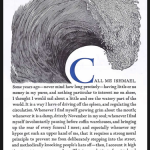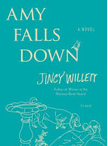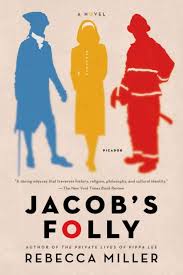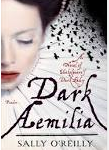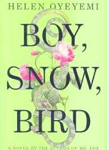 A young woman murdered, her body dumped at the edge of a park in the poor part of town. It sounds like the start of a conventional murder mystery. From the beginning, though, there are hints that more is underway in this complex book. First are the names: they are almost but not entirely Arabic – the main character is a police detective, Tyador Borlú, his sidekick a woman named Lizbyet Corwi. Are we in Turkey? The city is the vaguely Slavic-sounding Besźel – but no such city exists. Perhaps we are in an imaginary city, one that, like Hav (see my review of “Hav” by Jan Morris here) hovers just off the maps in the eastern Mediterranean.
A young woman murdered, her body dumped at the edge of a park in the poor part of town. It sounds like the start of a conventional murder mystery. From the beginning, though, there are hints that more is underway in this complex book. First are the names: they are almost but not entirely Arabic – the main character is a police detective, Tyador Borlú, his sidekick a woman named Lizbyet Corwi. Are we in Turkey? The city is the vaguely Slavic-sounding Besźel – but no such city exists. Perhaps we are in an imaginary city, one that, like Hav (see my review of “Hav” by Jan Morris here) hovers just off the maps in the eastern Mediterranean.
Confirmation comes soon enough. Tyador crosses a bridge, which he describes as “crowded, locally and elsewhere.” During a walk, Tyador sees a street that is quiet in Besźel, but crowded “with those elsewhere.” There are people, seen elsewhere, who must be unseen. Slowly, Besźel’s twin city, Ul Qoma, reveals itself. The cities are not twinned in the wayof Minneapolis and St. Paul. The twinning is instead superimposed, the development from two cultures that cleaved centuries ago yet share a space. The rift is mostly self-enforcing, except for a mysterious governing force, Breach. Residents of both cities live in dread of Breach, because once they have breached, or failed to ignore the difference in the cities, there are frightening and mysterious consequences.
The murdered woman was a graduate student from the US, working on an archeological dig in Ul Qoma, The murder appears to have taken place in Ul Qoma, though the body was dumped in Besźel. The victim was very interested in the political history of the two cities. What has she discovered? There is an intellectual tradition of a secret deeper than the mysterious Breach, a place or people called Orciny, that the victim once very publicly championed.
Tyador thinks it’s a perfect case for Breach to investigate, which doesn’t bother him as he is getting nowhere. Much to his surprise, Breach rejects the case, and Tyador goes through a complex bureaucratic process to cross to Ul Qoma where, in a new political spirit of cooperation, he must collaborate with his opposite number, an Ul Qoman detective named Dhatt.
Miéville compounds the mystery with the political overlay. The glasnost-like cooperation is bewildering to most inhabitants, who have learned since childhood to “unsee” their opposite numbers in what Miéville calls the “topolganger” city. He coins some additional words and uses a great deal of map imagery; shared areas are “cross-hatched,” while unshared areas are “total.” The occasional interference – a traffic accident – is a “protub,” and residents are adept at getting out of the way. It’s a collective fog (another image Miéville uses). But what happens when citizens can no longer look away? When a person is not in either city? When a policeman breaches? It’s a fascinating setup, one that repays close attention, and quite unlike most other mysteries. Miéville explores these questions while bringing the murder investigation and Borlú’s story to its satisfying conclusion. If mysteries are your thing at the beach, bring this one along.
See you in September! Have a book you want me to know about? Email me at asbowie@gmail.com. I also blog about metrics at asbowie.blogspot.com.

